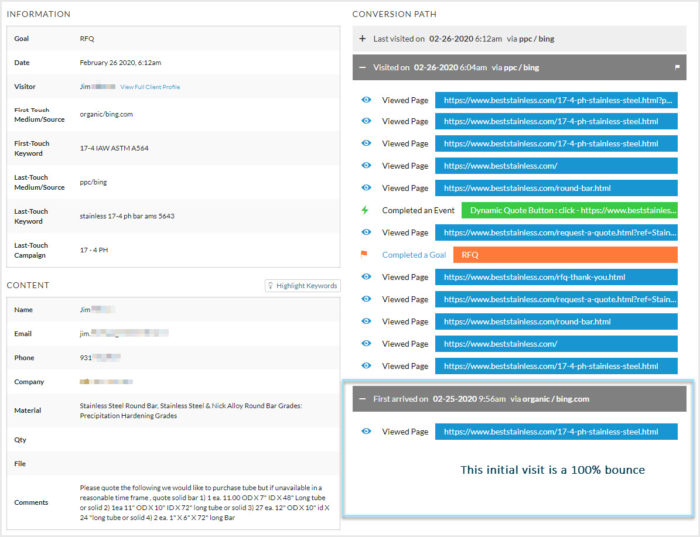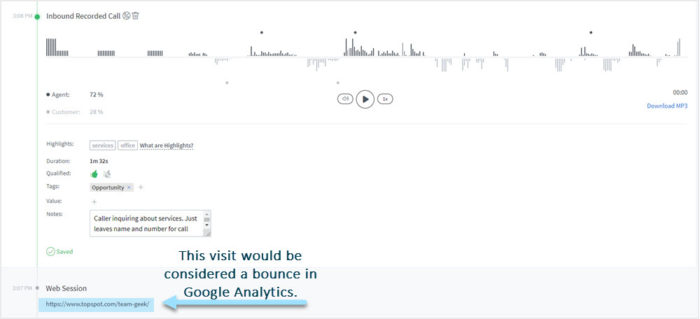May 27 2020
Looking Beyond the Metrics: Bounce Rate
Part 2: The Behaviors Behind the Bounce
You know that bounce rate can tell you about your website traffic, but what exactly does that number mean? Just like with any other metric, bounce rate only means so much when looking at it on its own. It’s important to also consider the type of traffic, users, and specific business type when viewing bounce rate at any level. While behavioral patterns vary within the industries themselves, industrial and B2B companies will often see longer lead times, multiple decision-makers, and a longer research phase – all of which can impact your bounce rate.
In Part 2, we demonstrate why looking at just the one number doesn’t explain the whole story. It usually pays off to dig deeper into the data to find out what is causing users to bounce from a single page.
Visits Resulting in a Form Submission
For example, if a user lands on a page and doesn’t visit another page, it’s counted as a bounce regardless of the time spent on that page. The snapshot below (taken from TopSpot’s form analytics platform) shows a visitor who came to a website, viewed a single page, then left, causing a “bounce”. The next day, they returned and requested a quote.
Visits Resulting in a Phone Call
It’s also a good idea to review phone call data in relation to bounced pages. If someone lands on a page and calls that business after reading the page they landed on, that would be considered a bounce. Below is a great example of why TopSpot recommends call tracking. The phone call shown below called after visiting a single page – a “bounce” in Google Analytics, but was actually a potential lead given they placed a phone call.
It’s important to be able to connect an event with the path the user took to get there. With call tracking, it’s easier to connect how website traffic leads to phone calls.
Though Google Analytics doesn’t track phone calls, you can set up an Event to track when a user clicks on your phone number on a mobile device. Some call analytics platforms also offer integrations with Google Analytics as well.
Informative Content
A simple explanation for bounces can be that the page answered the user’s question. This often happens with contact pages, FAQs, blog posts and other informational pages. Bounce rate does not reveal how long a visitor has spent on the site, which could be the more relevant metric depending on the type of business.
Above is a visitor recording from our heatmap analytics tool. While the visitor interacted with the page, and is visibly reading the blog article, they left the site afterwards. This is another example of where additional information is needed to understand a bounce.
Outbound Links
While outbound links should be used sparingly on a website, there are times when it’s necessary. For instance, distributors will often include links to the manufacturers of the products they sell. A click on one of those links would indicate a bounce in Google Analytics.
In Part 1, we included a link to the source of the information regarding the definition of bounce rate. It opened in a new tab, as all outgoing links should. If you were to read the blog and click on that link, it might show up as a bounce in Analytics.

What Does This Mean for Me?
In the examples above, we have demonstrated why looking at bounce rate often requires looking at more information. A bounce rate may appear to be low or high, but without looking at the rest of the available information, it’s just a number. Look at bounce rate as a guide to finding out more about what is happening on a website instead of an absolute.



